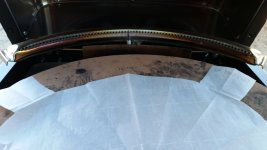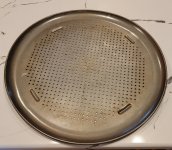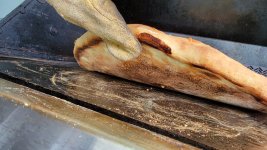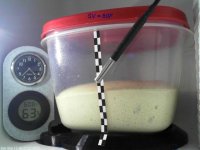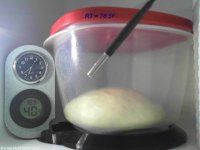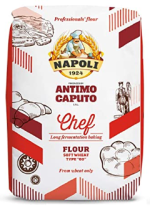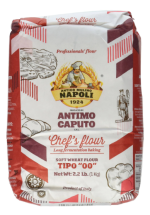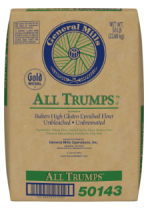Brett, King Arthur 12.7% organic bread flour. Cold fermenting I guess since it was in the fridge. NY style.
Thanks
Joe
Ed, Interesting. That could be some of the problem as I do get lots of snap back like a rubber band. I thought gluten was to allow stretch.... I also use a Kitchen Aid mixer but do not mix very long and only on low. I used to have similar issues when hand mixing and thought I was not kneading long enough so I got the Kitchen Aid.
i don't think you need any dough conditioners in your dry mix. i'd remove anything but the flour, water, yeast, salt and oil.
on your KA mixing, i'd recco at least a 5 minute mix cycyle on level 3. assuming you're using COLD water to start, you could then mix longer. the ssue you'll get into is the longer you mix the warmer the dough will become, basically accelearting the dough rise by raising the dough's temp. but i'd probably not mix for more than 10 minutes using the KA.
you're using a good flour. if you want a "softer" dough, replace some of your gross weight with AP flour which is less crunchy than bread flour. bread flour delivers more body to the pie shell when baking.
NY style pizza is usually a 24 hour ferment, with a longer table top ferment/rise and then the doughballs are formed and containers for the cold rise. pull from fridge around 3 hours before desired time to form pie shells. this warmup will allow the dough to room temp and relax so it'll be a supple and stretchy as possible, then form your pie(s).
forming an shaping a pie is less compicated than people make it out to be. if you;re not comfortable, keep it flat on your work surface and gently work it with your fingers and roate it till round. there's 10,000 videos on how to do this. if you want a referral video, just ask.
and i think that pie tin thingy you're using is no bueno. either use a real screen for ease of sizing and cooking and then deck the pie, or get comfortable making your pie on a wooden peel and gently launch it onto your steel. at 500F you're not going to burn your pizza, you have lots of wiggle room get it right and adjust as your pizza cooks.
and two punchdowns isn't needed. just one after the initial countertop rise is enough as you;re forming balls.

